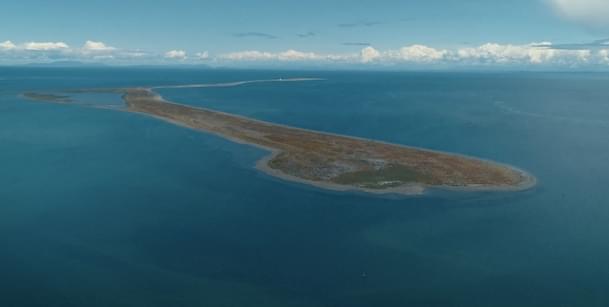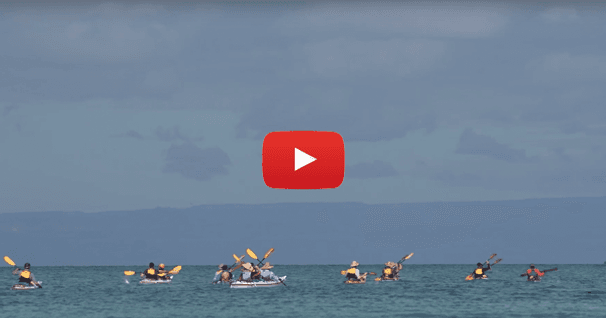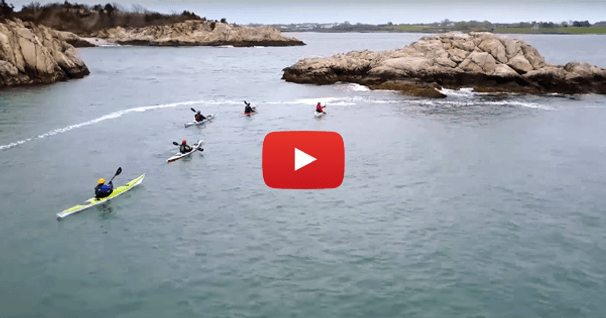How to Handle Situations When Paddling in a Group
When a situation occurs while paddling in a group, conditions don't stop. Learn some pointers on how to handle, respond, and be aware when something happens.
This video is about remembering that conditions don't stop just because something is happening within our paddling group.
I wanted to have a quick discussion on this topic because I think it can be really important. It's funny how quickly we might forget this on the water sometimes just because, you know, we're taking care of someone, or something's happening and we're busy thinking about how to take care of that situation.
50 years of lightweight, maneuverable, high-performing kayaks.
Check out this interview with Tom Keane, Eddyline Kayaks Co-Owner, on their journey!
Whatever Conditions We're In, They Are Just Going to Continue
The idea is, whatever conditions we’re in, that's just going to continue regardless. We always must be vigilant. You know how oftentimes while you're driving you'll get stuck in traffic and you'll think “what's going on up ahead?” and it turns out people are just simply slowing down to look at something. Nothing actually happened, but they still slow down to look and that's something that happens within groups when we're paddling as well.
Let's say someone capsized in the group. A lot of times other paddlers around will just stop everything and simply watch. It might just be concern for a buddy or you just want to make sure everything's okay, but we go from being active to be passive. We simply watch the rescue and then we often forget what's happening around us. So this discussion is to reinforce the importance of everybody within the group to always pay attention to what conditions are doing.
In an earlier video I talk about delegating responsibilities while paddling in a group, and the idea of that is similar to this. You can't be everywhere at once. Let's say you're the group leader, or you happen to be the person that's going to be performing a rescue. It's hard for you to also be on top of everything that's happening within the group and outside as well.
So for example, let's say someone is helping with a rescue. Someone else can then take care of the rest of the group – pull them over to a safe place and simply be ready to help if the person performing the rescue needs it. But the idea is to stay out of the way and be vigilant of other things that maybe the person performing the rescue is not aware of.
Be Active; Not Passive
I’ll give you another example: years ago I was down in South Carolina for a week of training and we were out by the jetty in Charleston Harbor. We were playing in a really fun tide race. At one point I capsized and came out of my boat, so someone else came to do a rescue. The waves were actually pushing us onto the jetty, so what happened was, a third person that was being vigilant came, told us about it, clipped onto the person performing the rescue on me. The paddler performing the rescue was able to focus only on me, while the other person towing us was just making sure to keep us out of trouble.
I'll give you another example. Another time we were training and we were simulating a heart attack on the water. While another person was taking care of the disabled paddler, I hooked onto both of them and I towed them back to shore. Once we got to shore, the rest of the group went into action. Someone started performing CPR right away, another person called 9-1-1, a third person had their chart out to make sure we could give directions correctly – once again, this was a simulation, but as soon as we landed and I saw that the group was taking care of the situation, I then turned my attention back to the group. I did a head count and realized that someone was missing. Our instructor trainer had, on purpose, told somebody to go and hide while we were doing this rescue. I found them right away, he was close by, but the idea was to see how long it would take the group to realize that someone was missing.
In situations like that is very, very easy to lose track of either people, the group, or just what's going on. So it's imperative to make sure that everyone is aware of what's happening, that you don't just become passive.
I'll give you one more example. This was a bit more recent. Several of us were out surfing and I was testing out a dive housing for my camera. So I was hanging out in the waves filming people and trying to hold my own without actually watching the waves. Now, of course at some point I lost my balance, I capsized and I came right back up. Two of my buddies (this is what we always do, we're always keeping track of each other) they saw that I capsized. So they rushed over to make sure I was okay. Once I came up we were all chatting and we didn't realize that, of course, the waves just keep on coming.
It was Shannon, Chris and myself. Luckily, Chris saw the wave coming. He called it out, Shannon and I saw that it was probably going to be picking up Shannon and moving her around because of the way she was situated to the wave. So both Chris and I reacted quickly, and we capsized. There was no problem at all, Shannon was able to ride that wave out of the way, and everyone was safe. Nothing happened, but it was a great learning moment for us to remember that just because we were hanging out and making sure we’re okay, the situation did not change. The waves didn’t care at all, they were going to keep on coming. So the next time we know that we're going to not only keep an eye on the situation but also are going to orient ourselves to make sure that we can check on each and still be safe near each other.
Overall, I was very proud of how we handled that situation. In an instant, Chris called the wave, then the two of us knew exactly what to do. We both capsized, Shannon went right by, and we came right back up. Later, we got to talk about it and discuss how we would avoid that in the future.
Always Be On The Lookout
So, the idea is simply to always be on the lookout. To know what can happen next if someone within your group is doing something or there's a capsize. Don't be a spectator, be involved, but stay out of the way if someone is doing a rescue. Having too many people or having many giving their opinion at the same time makes for things to be very messy. One person should be addressing the problem – but then, from the periphery, you can always be of help if help is needed.
So if you'd like to share any situations that are similar, or any other tips you've learned along the way, I'd love to hear about it. Please drop a comment, subscribe if you like, I'm always trying to put these videos out. As always, this is Luke Rovner for Kayak Hipster. Thank you for watching and see you next time.
Related Articles
Dungeness Spit from above, with the New Dungeness Lighthouse in the distance Dungeness…
Whenever you're paddling, there's safety in numbers and so it's generally not a good idea to paddle…
River obstacles are serious hazards on any waterway - from placid, slow-moving streams to raging,…
Here's a list of ten tips that I found useful when paddling with different groups. Paddling group…




